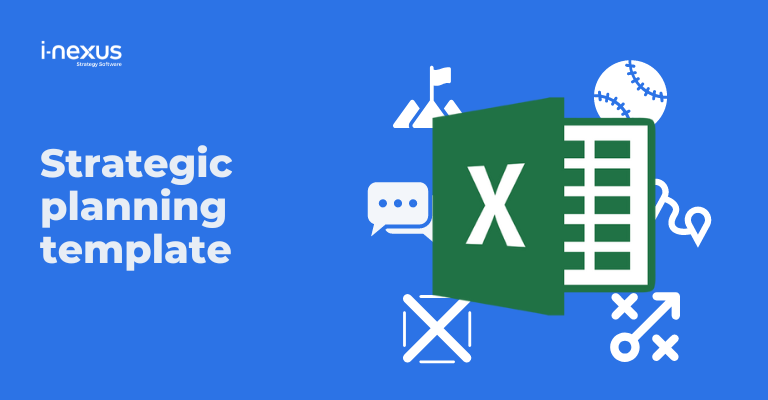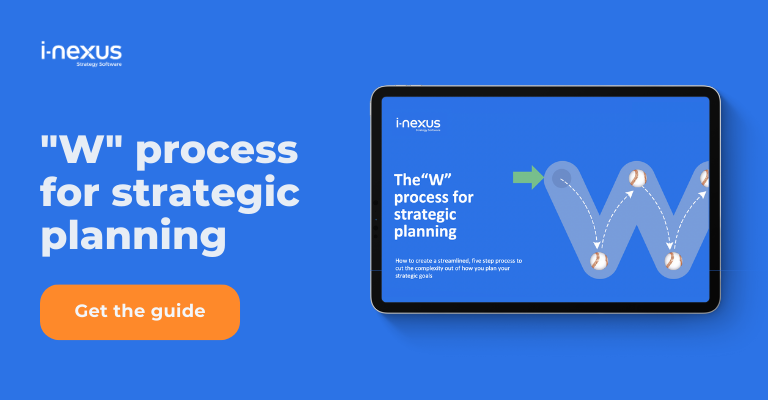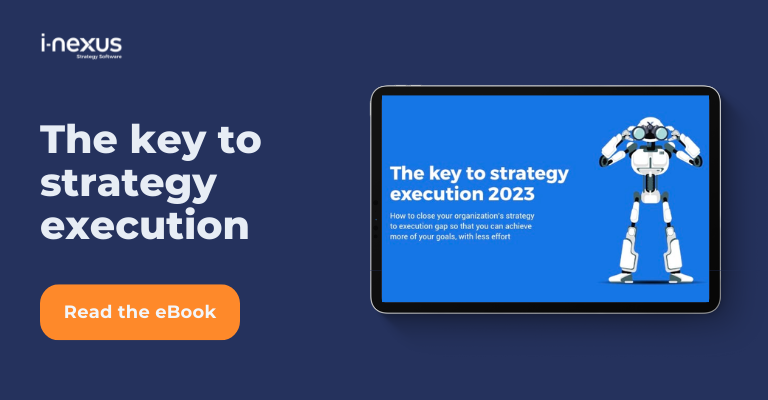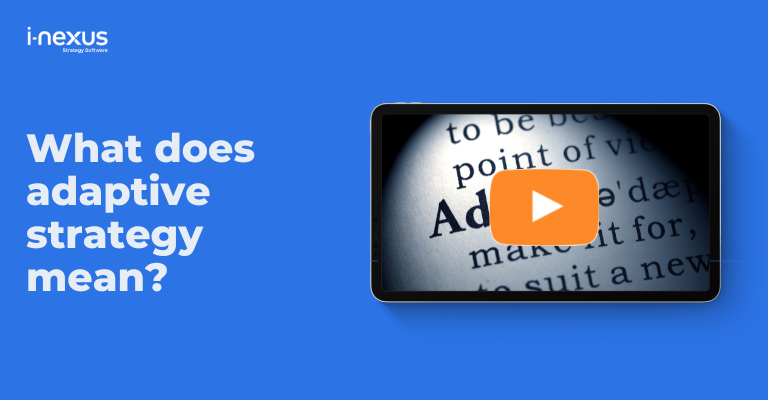Are your strategic plans fully fleshed out and ready to go? Here are 10 keys to achieving more of your goals this year.
Written by: James Milsom, Head of Marketing
Has your business set organizational goals and a strategic plan for the coming years? The next big thing to consider is ensuring it gets done.
Strategic execution is critical to ensure you reach your organizational goals. It will comprise various elements such as daily structures, systems, operational goals, and aligning all efforts to your plan to enable your team to be ready to succeed.
Unfortunately, even the best strategic plan can fail when you lack the proper execution. Studies show that about 90% of businesses fail to meet their goals due to strategic planning and execution gaps.
Read on to discover the 10 keys to successfully executing your strategic plan and achieving your goals in 2023.
“Most leaders would agree that they’d be better off having an average strategy with superb execution than a superb strategy with poor execution.
Those who execute always have the upper hand.”Stephen R. Covey
1) Align strategy to action
One common barrier that most businesses face during strategy execution is that employees aren't acting with strategy in mind.
A natural reality when 'fire fighting' or business as usual takes the front seat.
But this can also extend to the hiring of employees. After all, if employees enroll post strategy formulation, or the role itself is opposed to the plan, this is a recipe for failure.
Therefore, start by aligning strategy with action to ensure each employee is effective in their tasks. Ensure your HR team works with Hiring Managers to craft descriptions and responsibilities which serve the plan.
Hire those who have the execution mentality.
2) Plan with a method
Before you dive into the execution of your plan, take time to thoroughly build it out using a method and clear deliverables which all decision-makers and stakeholders agree on.
That is why the Balanced Scorecard, X-Matrix, and Strategy Canvas are popular planning tools. They provide different angles to build your plan.
Doing so, and involving key stakeholders, help you build consensus.
Then, when you move onto the goal planning element, you can ensure everyone aligns with the same plan and set of goals, building portfolios and projects which work towards them in unison.
And ultimately, you move ever closer to the total organizational understanding of your plan, your goals, and the action to deliver your results.

Planning for Strategy Execution success
3) Create and cascade goals
Continuing the idea of a shared commitment to your plan, it pays to think differently about how you create your goals so that you build a shared agreement on what needs to be achieved.
These can be bottom-up goals formed by your teams in plants and on product lines or departments.
Alternatively, you may have Heads and Directors work together to create the goals.
In either case, ensure that you involve the appropriate stakeholders.
Strategic goals are among the most crucial parts of the strategic planning process and set the stage for executing well.
They range from the specific financial and non-financial objectives that the company aims to achieve within a specified period of about three to five years.
Ensure every stakeholder participates in the goal creation to improve corporate responsibility and better visibility.
And one approach to do that is using the Catchball goal technique.
More information about Catchball can be found here and our W process guide.
4) Motivate your employees
Employee motivation is inevitable for the successful implementation of a strategic plan.
The specifics of proper strategic planning depend on the system of motivation you have in your company.
Have systems that inspire your employees to be involved in orienting their mindset to think strategically.
For example, consider ideas such as culture hacking or finding a noble cause to have your teams truly get behind the goals.
Or, look to something more creative. Ideas could include:
- A visual scorecard for team v team gamification
- Buyer personas and user personas to drive home who you are trying to help
- Providing donations to charities and causes which your team cares about when goals are realized
- Reward effort and behavior using a Bowling Chart, and move away from results as the sole measure of success.
5) Show what it takes to succeed
This goes beyond being a great leader.
In our key to strategy execution eBook, we cover what separates high and low-performing organizations.
Take these stats and prove to your colleagues what happens with the right mindset, tools, and approach to strategy execution:
- 42% of leaders at high-performing companies have the tools and capabilities to execute strategy
- 56% of these leaders report that their workforce has a better belief in well-defined goals
- 52% report organization-wide solid alignment to strategy
6) Show what it takes to fail
Don't be afraid to show what it takes to fail at strategy execution. It's better to know what to avoid than fall into the same traps countless companies have encountered:
- Only 12% of leaders at lower-performing organizations report that they have the tools and capabilities to execute their strategic plan
- 28% of these leaders say that their workforce understands their goals
- Only 32% report strong alignment and commitment to the program, goals, and associated projects
7) Communicate change
You can easily overlook the power of communication during strategy execution.
A significant reason is that 95% of employees are usually unaware of their company's strategies or don't understand how to support them.
Proper communication is worth improving to ensure everyone meets their daily tasks.
Likewise, don't make mistakes such as going through the lengths of explaining your strategy, the plan, and the goals, only for someone to forget them by the time they look at their personal goals.
This is a vital thread often missing in organizations that fail to deliver their plan.
Communication is also effective in easing people through the change experienced with executing your business strategy.
8) Monitor the plan and adapt
When it comes to succeeding at executing your strategy, you must assess your progress toward your goals.
You can make this possible by determining the right key performance indicators (KPIs), determining stage gates and workflows for delivering projects, and automating the plan's health reports.
Such numeric goals offer better visibility to track and monitor performance and check if you require any changes.
But remember that sometimes even an adequately implemented strategy can fail.
So, go through a scenario planning exercise. Look towards the past, what's happening right now, and the variables in your market, internal resources, and capabilities that could force you to change course.
Planning for possible scenarios will enable you to bounce back and progress toward your goals.
Such a mindset will help you maintain a high execution rate and approach failures with the right management tools.
9) Data is your friend
The main reason why data is so essential in business decision-making is that it enables consistency and continuous business growth.
Data analysis allows your business to look for new opportunities with a higher success rate and generate more revenue than those that don't depend on data.
And that leaves you in a place to evolve and grow over time to adapt to changing situations.
Looking beyond identifying opportunities in revenue, data needs to be a bedrock in your approach to performance management.
A performance report offers an accurate and clear picture of progress Strategy Execution.
Whether in Excel, PowerPoint, BI, or strategy execution software, it helps you to record all items related to daily activities, then use this information around metrics and an employee's narrative to identify your strengths and weaknesses.
During meetings, you can also roll up your performance data to view the overall health of the plan, and its impact on achieving your goals and demonstrate financial results.
It can even show how much time has been saved on activity and can now be used on other efforts more central to your strategic success.
10) Agile, adaptive, continuous strategy
Lastly, pause and look at the last two years plus.
Change is the only certainty.
And therefore, it is time to approach the way you execute strategy in a more Agile manner.
Applying a an Agile, continuos mindset to strategy will allow you to adapt your strategic plans and:
- Continuously monitor your surroundings, scanning for early signs of strategic disruptions
- Shorten the length of plans
- Introduce a method to assess the value of your goals
- Set the agenda for quick, data-based decision-making so that you can act before the market and react to your customers
Embracing a continuous approach to strategy is gaining traction. And rightly so.
Learn more about improving your strategy execution
Continue exploring how to improve your strategy delivery by visiting our strategy execution knowledge hub, or with any of the below:
- 4 ways to align corporate and functional strategic plans: Realizing your goals means coordinating a great deal across your organization. Here are four ways to link corporate and functional strategic plans.
- Download our key to strategy execution eBook: Read how companies like Danaher and HP have mastered Strategy Execution Management and what you can learn from them.
- What does it mean to be an Agile business?: Take the leap into the future of strategic planning and execution with this fascinating insight.
About the author
James Milsom is Head of Marketing at i-nexus. James has wide-ranging experience in markets such as telecommunications, energy, education, and software.
As Head of Marketing, his drive is to raise awareness and understanding of the challenges facing enterprises in delivering strategic objectives and transformation amidst changing markets and the obstacles traditional tools and methods present leaders.
If you’d like to talk more about Strategy Execution, reach out to James on james.milsom@i-nexus.com or connect with him on LinkedIn for the latest insights.





.jpg?width=352&name=KPIs%20(3).jpg)
